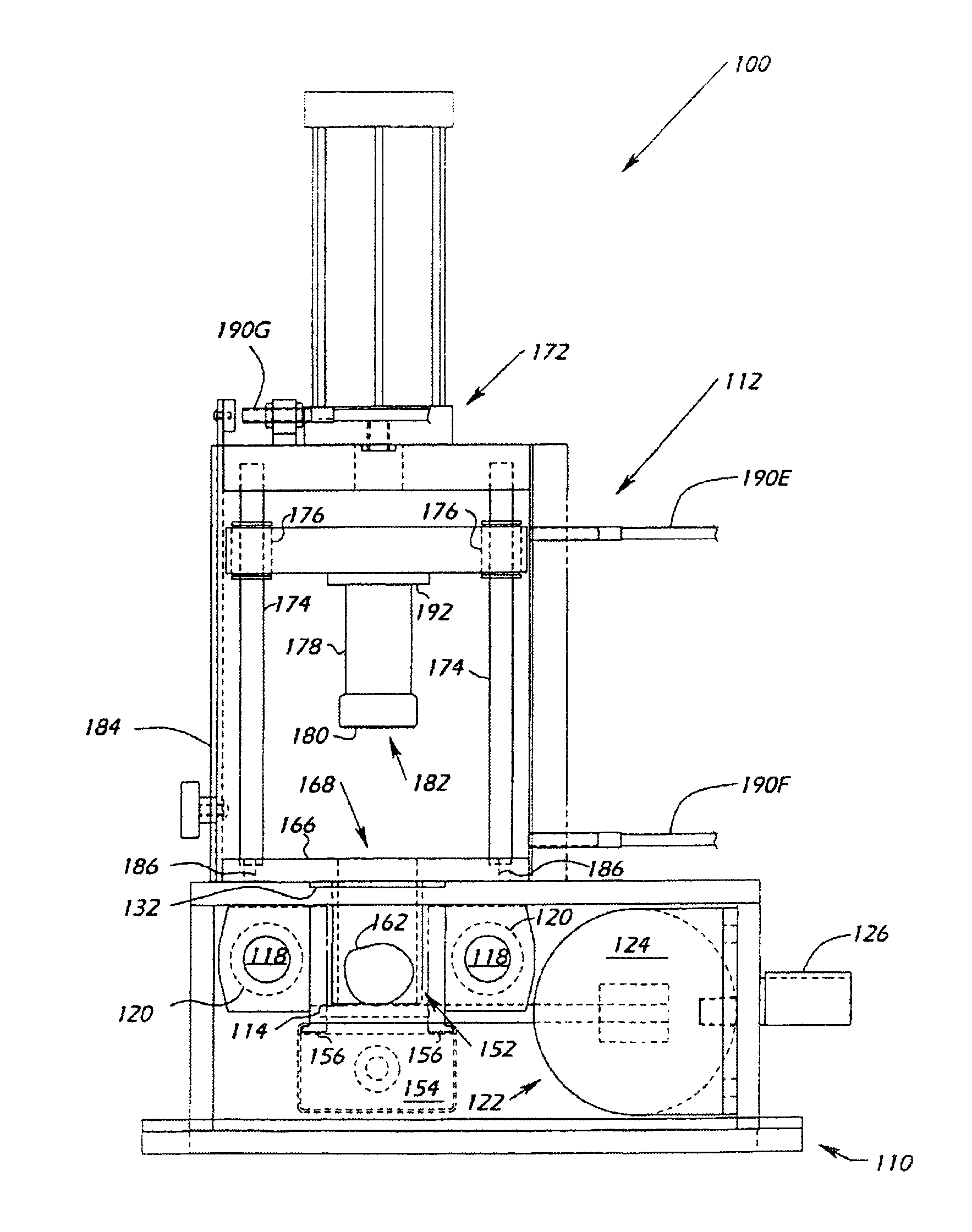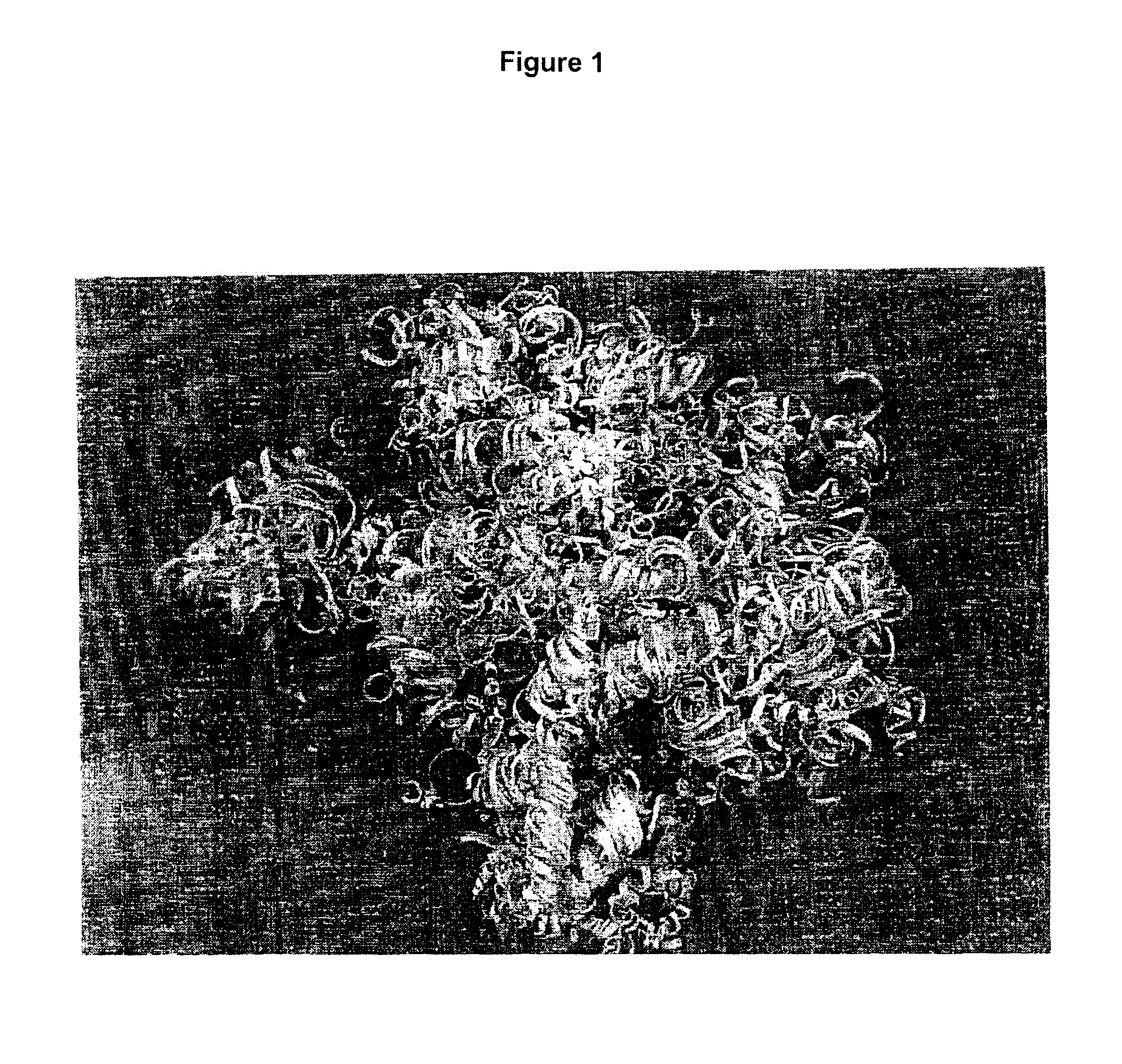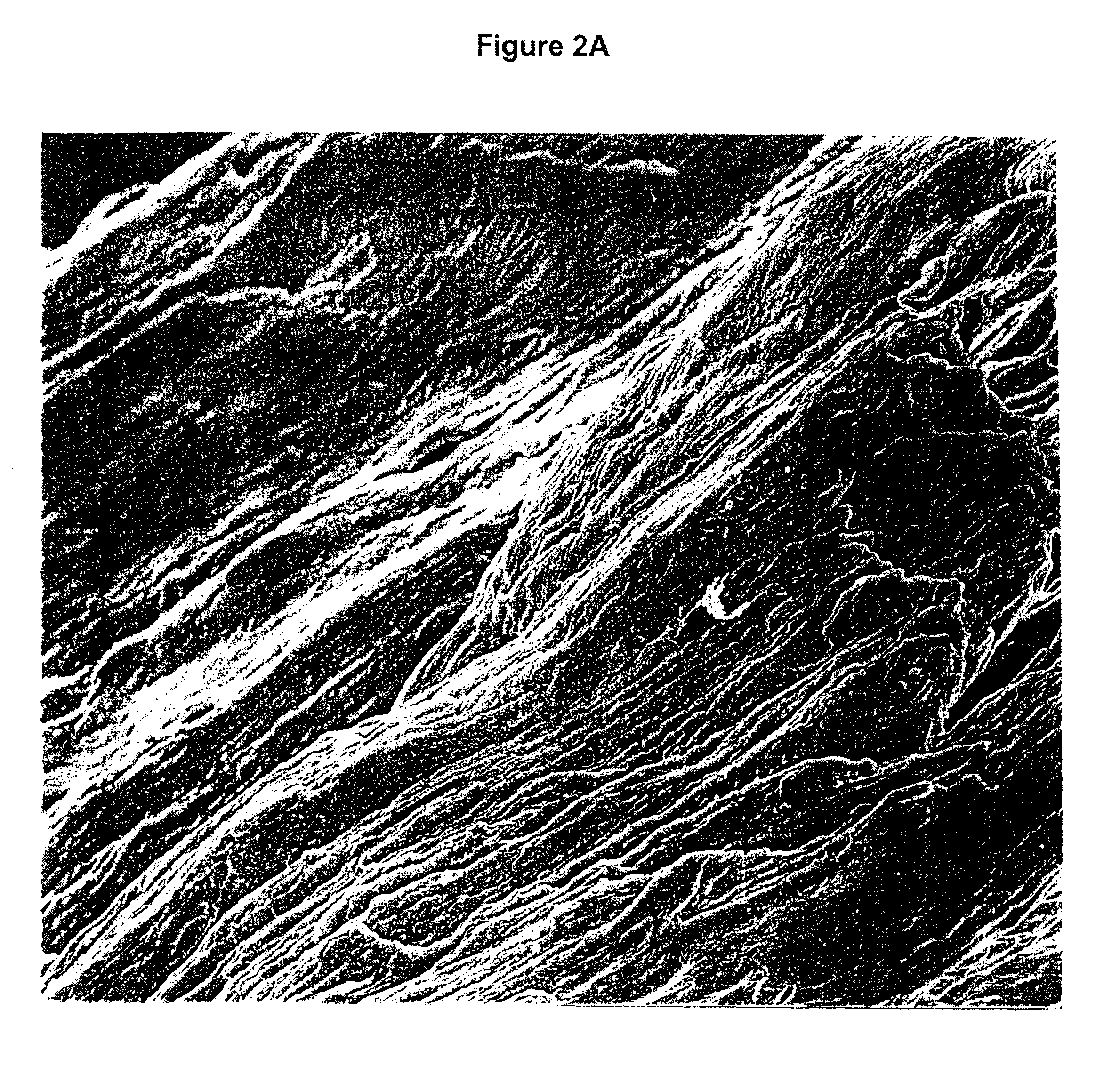Device and process for producing fiber products and fiber products produced thereby
a technology of fiber products and fiber products, applied in the direction of impression caps, prostheses, drug compositions, etc., to achieve the effect of reducing stress and achieving the desired substrate properties
- Summary
- Abstract
- Description
- Claims
- Application Information
AI Technical Summary
Benefits of technology
Problems solved by technology
Method used
Image
Examples
example 1
[0088]Diaphyseal shafts (total of approximately 520 grams wet weight of bone material) from the long bones and ribs of a given donor (human donor information is confidential) were mechanically debrided (as disclosed in co-pending U.S. patent application Ser. No. 10 / 108,104, incorporated by reference herein) to remove associated periosteal tissue and bone marrow in the intramedulary canal. The shafts and ribs were then cut into linear pieces with widths, thickness, and lengths approximating <45 mm×<45 mm×6 cm using a bone saw. A cut piece of cortical bone (wet weight 48 grams) was then loaded individually into the load chute of the cutting device and the clamping cylinder was locked into the closed position. The cutting slide having the cutting blade disposed therein was activated and cut fiber bone was collected into the receiving bin. A total of 42 grams of fiber bone were accumulated during the 60 cutting cycles (cutting cycle equals one back / forth pass of the cutter / cutter slide ...
example 2
In Vitro Attachment of Fibroblast Cells to Fiber Bone
[0091]The attachment of fibroblast cells to fiber bone may be quantitated using the methyltetrazolium dye assay method (MTT) where metabolic activity reduces the methyltetrazolium dye to an insoluble (chromogenic) substrate that can be quantitated using the spectrophotometer. In this particular assessment, cell attachment is compared with cell attachment to particle bone (cortical bone ground, using impact fragmentation) ground to a particle size range of 250 to 710 microns, demineralized and used in equal gram equivalents.
[0092]Fibroblast cells (NIH 3T3) were chosen for the study in that these cells represent relatively undifferentiated cells present in the body and are presumed to represent those cells that primarily migrate to the site of implantation of demineralized bone such as used in nude (athymic) mouse implant studies to assess the osteoinductivity of demineralized bone.
[0093]Fibroblast cells (1-5×105 cells / ml) grown in ...
example 3
In Vivo Attachment of Cells to Fiber Bone
[0096]Implantation of biomaterials into muscle pouches of athymic (nude) mice (two implants / mouse, implanted bilaterally in the gluteal region of the mouse) represents the current “gold-standard’ method of assessing the osteoinductivity of such biomaterials. Between 10 and 20 mg (dry weight) of biomaterials (demineralized bone in this example) are rehydrated with isotonic saline and implanted just under the fascia using a dental amalgum tool (such as typically used by a dentist to add the filing materials to a cavity formed in teeth).
[0097]In this study, human “shaved” (fiber) bone and human “DMB Positive Control” (particle) bone were implanted into muscle pouches of athymic mice (two implants / mouse and three mice per implant group). The implanted materials were explanted after 28 days, and the explants (explanted as “hard” nodules) were fixed in buffered formalin. The samples were decalcified and embedded in paraffin prior to preparation of ...
PUM
| Property | Measurement | Unit |
|---|---|---|
| cutting angle | aaaaa | aaaaa |
| cutting angle | aaaaa | aaaaa |
| cutting angle | aaaaa | aaaaa |
Abstract
Description
Claims
Application Information
 Login to View More
Login to View More - R&D
- Intellectual Property
- Life Sciences
- Materials
- Tech Scout
- Unparalleled Data Quality
- Higher Quality Content
- 60% Fewer Hallucinations
Browse by: Latest US Patents, China's latest patents, Technical Efficacy Thesaurus, Application Domain, Technology Topic, Popular Technical Reports.
© 2025 PatSnap. All rights reserved.Legal|Privacy policy|Modern Slavery Act Transparency Statement|Sitemap|About US| Contact US: help@patsnap.com



